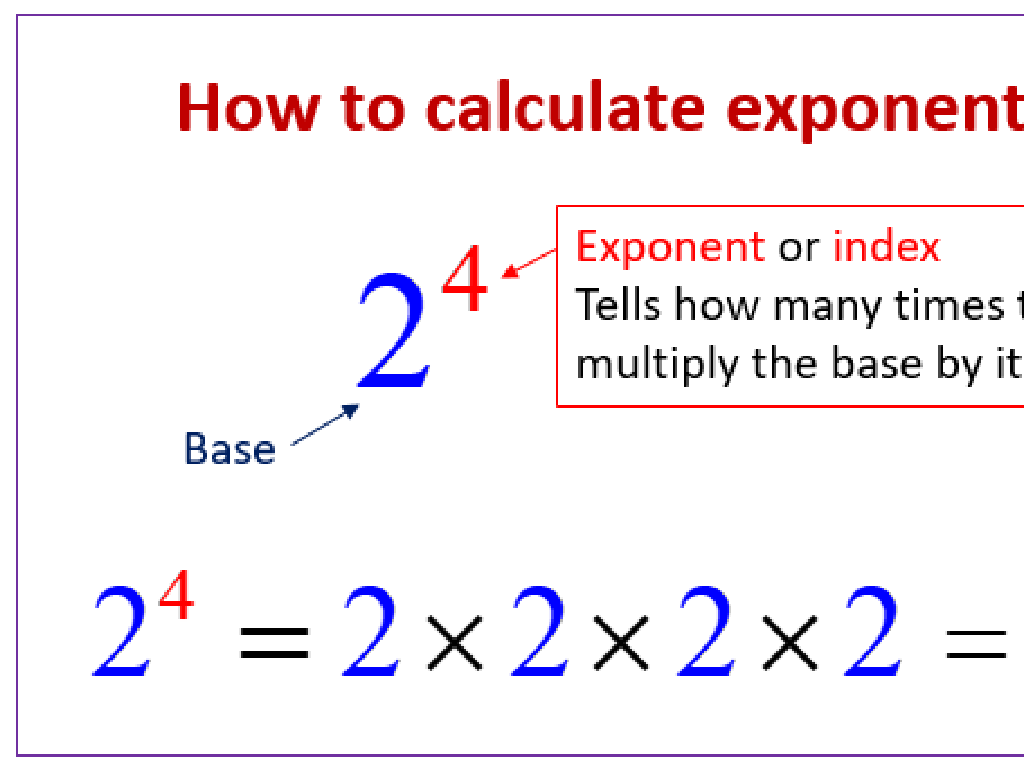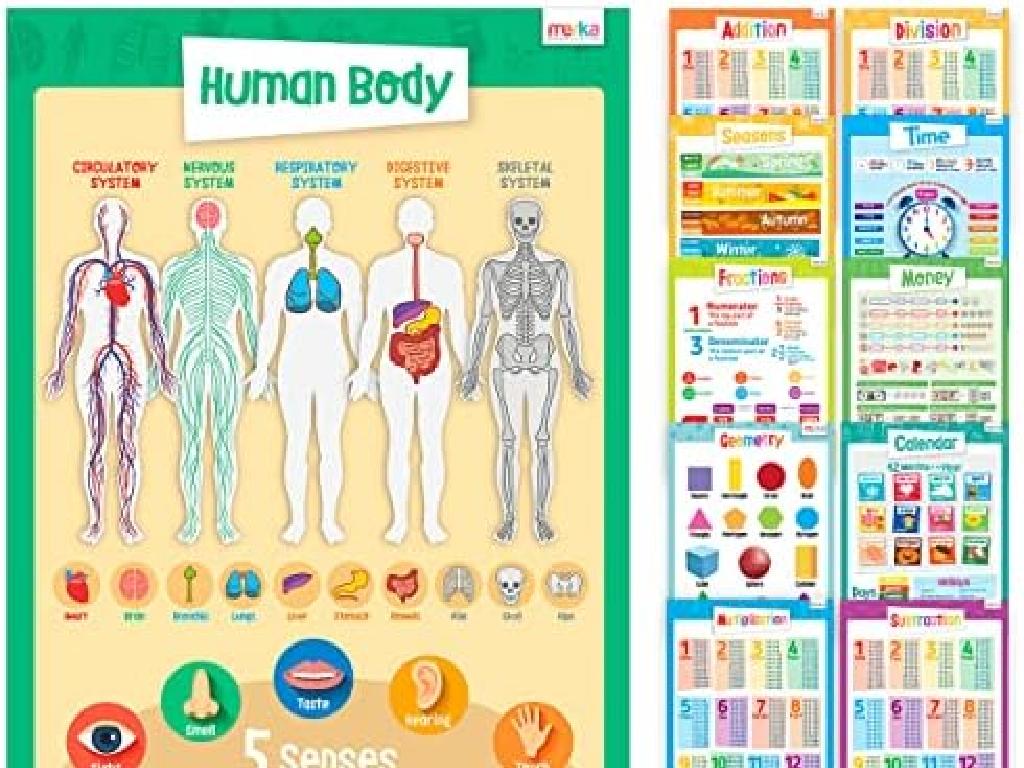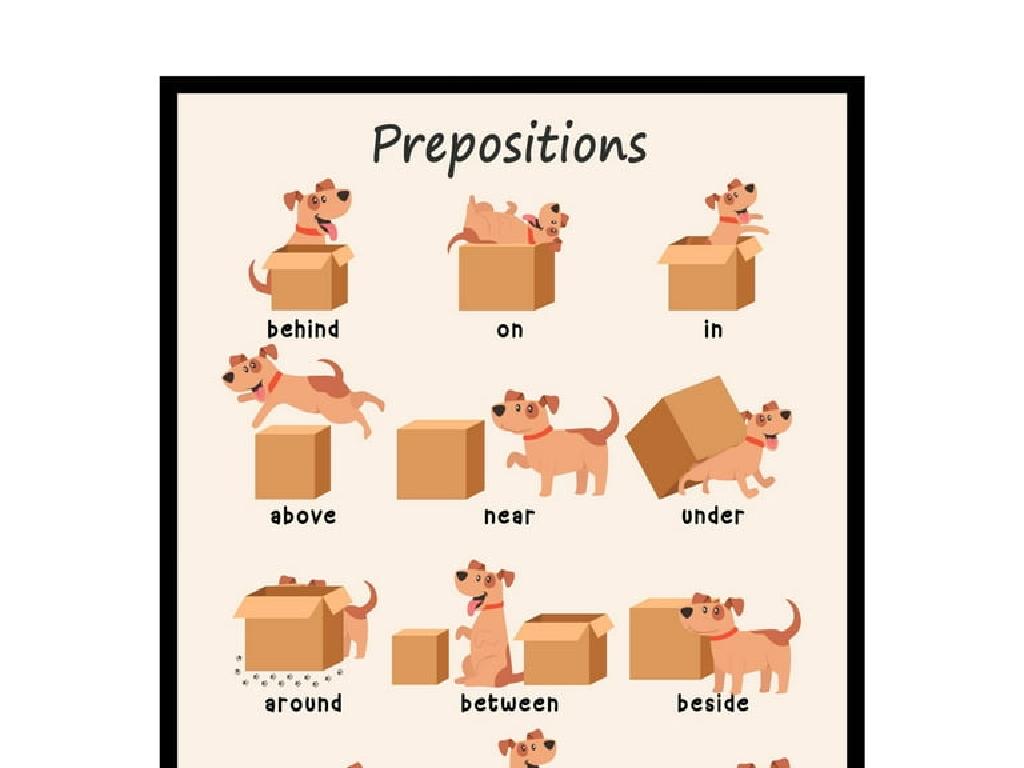Estimate Products Of Mixed Numbers
Subject: Math
Grade: Fifth grade
Topic: Multiply Mixed Numbers
Please LOG IN to download the presentation. Access is available to registered users only.
View More Content
Estimating Products of Mixed Numbers
– What are mixed numbers?
– A number made up of a whole number and a fraction, like 2 1/2
– Steps to multiply mixed numbers
– Convert to improper fractions, multiply, convert back
– Real-world application
– Use in cooking, construction, and budgeting
– Practice estimation with examples
– Example: Estimate 2 1/2 x 3 3/4
|
Begin the lesson by explaining what mixed numbers are and show visual examples. Discuss the importance of multiplying mixed numbers in various real-life situations such as cooking (e.g., doubling a recipe), construction (e.g., measuring materials), and managing finances (e.g., budgeting expenses). Teach the steps to multiply mixed numbers: converting them to improper fractions, performing the multiplication, and then converting back to a mixed number if necessary. Provide practice problems where students can estimate the product of mixed numbers to reinforce the concept. Encourage students to think about where they might need to use these skills outside of the classroom.
Review: Understanding Mixed Numbers
– Define mixed numbers
– A number made up of a whole number and a fraction
– Real-life examples
– Examples: 1 1/2 pizzas, 3 3/4 gallons of milk
– Identify parts of mixed numbers
– Whole number: the number before the fraction, Fraction: the number after the whole number
– Quick practice activity
|
Begin the lesson by defining mixed numbers as the sum of a whole number and a fraction. Provide relatable examples such as portions of pizza or measurements of milk to illustrate mixed numbers in a context familiar to fifth graders. Move on to a quick interactive activity where students identify the whole number and fraction parts of mixed numbers. This will help solidify their understanding of the concept before moving on to estimating products. Encourage students to think of their own examples and share them with the class. This review is crucial as a foundation for learning how to estimate products of mixed numbers.
Multiplication as Repeated Addition
– Review multiplication basics
– Relate mixed numbers to addition
– Just like adding a number to itself multiple times
– Example: Whole number times mixed number
– 3 x (2 1/2) is like adding 2 1/2 three times
– Practice estimation with examples
– Use rounding to estimate products easily
|
Begin with a quick review of multiplication as repeated addition to refresh students’ memory. Explain that multiplying mixed numbers extends this concept, where we can think of it as adding a number to itself a certain number of times. Provide a clear example, such as multiplying a whole number by a mixed number, to illustrate this point. For instance, 3 times 2 and a half can be visualized as adding 2 and a half, three times. Encourage students to practice this concept by estimating the products of mixed numbers, using rounding to simplify the process. This will help them grasp the concept of multiplication involving mixed numbers and prepare them for more complex problems.
Estimating Products of Mixed Numbers
– Understanding estimation
– Estimation helps to quickly find an approximate value.
– Importance of estimating products
– Useful for checking the reasonableness of answers.
– Estimating with whole numbers
– Round numbers to nearest ten or hundred to estimate.
– Practice estimation with examples
– Let’s estimate 7 1/2 x 3 3/4 by rounding to 8 x 4.
|
This slide introduces the concept of estimation in the context of multiplying mixed numbers. Estimation is a mathematical skill that allows students to find approximate answers quickly, which is particularly useful when exact calculations are not necessary or when checking the reasonableness of a calculated answer. Emphasize the practicality of estimation in everyday situations, such as shopping or cooking. Show how to estimate products by rounding mixed numbers to the nearest whole number and then multiplying. Provide examples and encourage students to practice with additional problems to solidify their understanding.
Estimating Products of Mixed Numbers
– Steps to estimate products
– Round to nearest whole number
– If you have 3 1/2, round to 4
– Multiply the rounded numbers
– Example: 4 x 5 instead of 3 1/2 x 4 3/4
– Check reasonableness of product
– Does the estimate make sense?
|
When teaching students to estimate the product of mixed numbers, start by explaining the steps involved in the process. Emphasize the importance of rounding mixed numbers to the nearest whole number to simplify multiplication. Provide examples of rounding, such as turning 3 1/2 into 4. Then, guide students through multiplying these estimated whole numbers together. After obtaining the estimated product, encourage students to check if their answer is reasonable by comparing it to the original mixed numbers. This helps them understand the concept of estimation and its practicality in solving real-world problems without needing an exact answer.
Estimating Products of Mixed Numbers
– Example: Estimate product steps
– 3 1/2 x 4 3/4 H 3 x 5 = 15 (round to nearest whole number)
– Compare estimate to actual product
– Actual: 3 1/2 x 4 3/4 = 16 5/8. Compare with 15.
– Discuss estimation accuracy
– Estimation can be slightly less or more than actual.
– Why estimation is useful
– Estimation helps in quick calculations & checks.
|
This slide aims to teach students how to estimate the product of mixed numbers by rounding to the nearest whole number before multiplying. Start with a clear example, showing step-by-step how to round and then multiply. After finding the estimated product, calculate the actual product and compare the two to highlight the difference. Discuss why the estimate may not be exact and the importance of understanding the accuracy of estimation. Emphasize that estimation is a valuable skill for making quick calculations and for verifying the reasonableness of answers in real-world situations.
Class Activity: Estimation Station
– Pair up for estimation practice
– Estimate products of mixed numbers
– Apply estimation to real-world problems
– Example: If a recipe needs 1 3/4 cups of sugar and you make it 3 times, estimate the total sugar needed.
– Share estimates with the class
|
This interactive class activity is designed to help students understand the concept of estimating products of mixed numbers. Students will work in pairs to strengthen their estimation skills. Provide them with a set of mixed number multiplication problems and ask them to estimate the products. Then, present real-world scenarios where they need to apply estimation, such as adjusting recipes or calculating material lengths. After the activity, facilitate a discussion where students can share their estimates and methods with the class. This will allow them to see different approaches to estimation and understand its practical applications. Possible activities for different pairs could include estimating costs for a school event, materials needed for a craft project, or the amount of time spent on homework over a week.
Wrapping Up: Estimation in Multiplication
– Recap of estimation techniques
– Estimation’s role in daily life
– Helps in quick mental math for shopping, cooking, etc.
– Homework: Practice estimation
– Complete the worksheet on estimating products of mixed numbers
– Keep practicing and ask questions
|
As we conclude today’s lesson on estimating products of mixed numbers, it’s crucial to remind students of the different techniques we’ve covered. Emphasize the practicality of estimation in everyday situations such as shopping or cooking, where exact numbers aren’t necessary. For homework, assign a worksheet that provides a variety of problems to practice estimation skills. This will reinforce their learning and build confidence in their ability to estimate with mixed numbers. Encourage students to attempt the problems independently but also to reach out with questions during the next class. The goal is to ensure they understand the concept and can apply it outside of the classroom.






